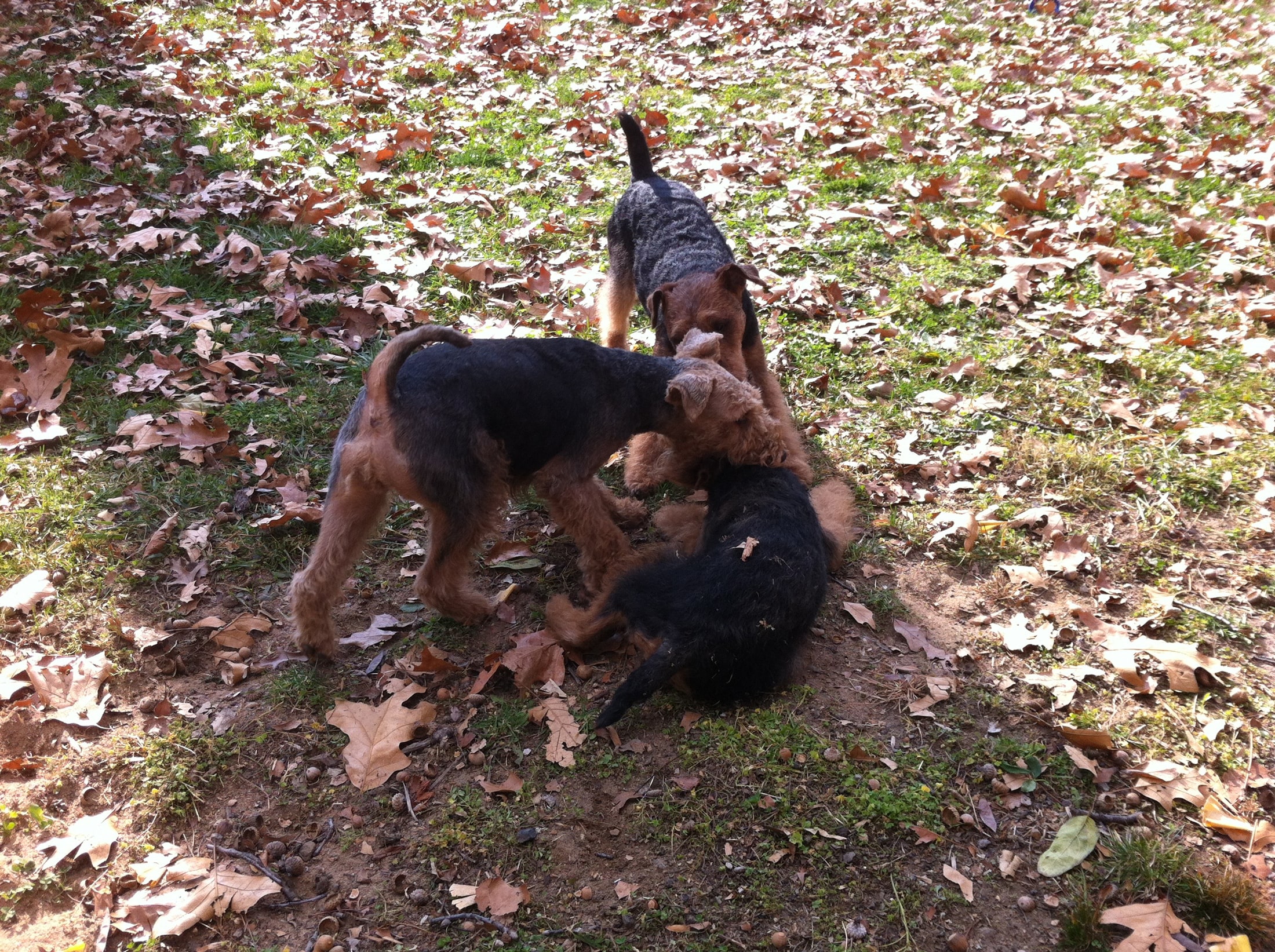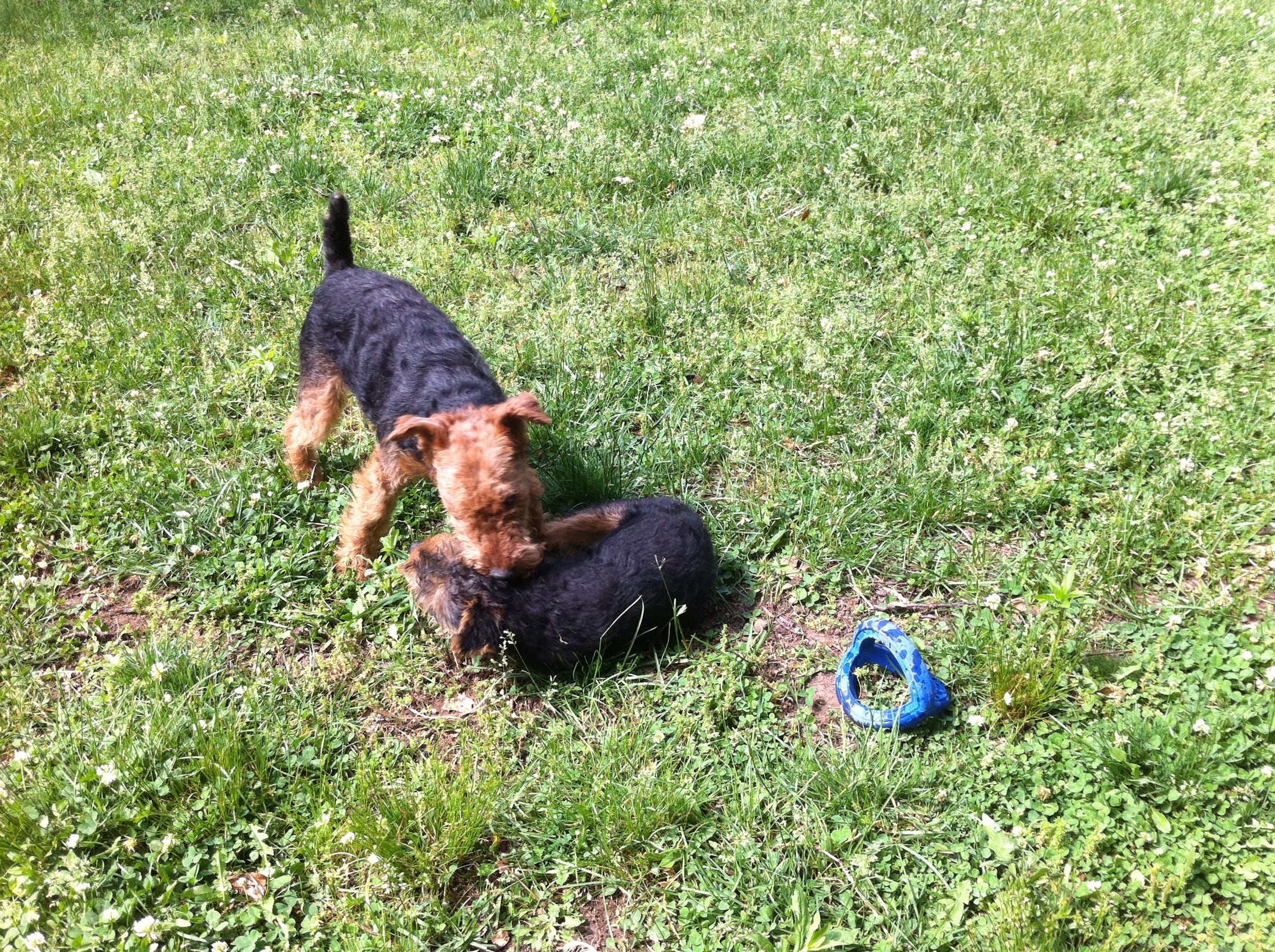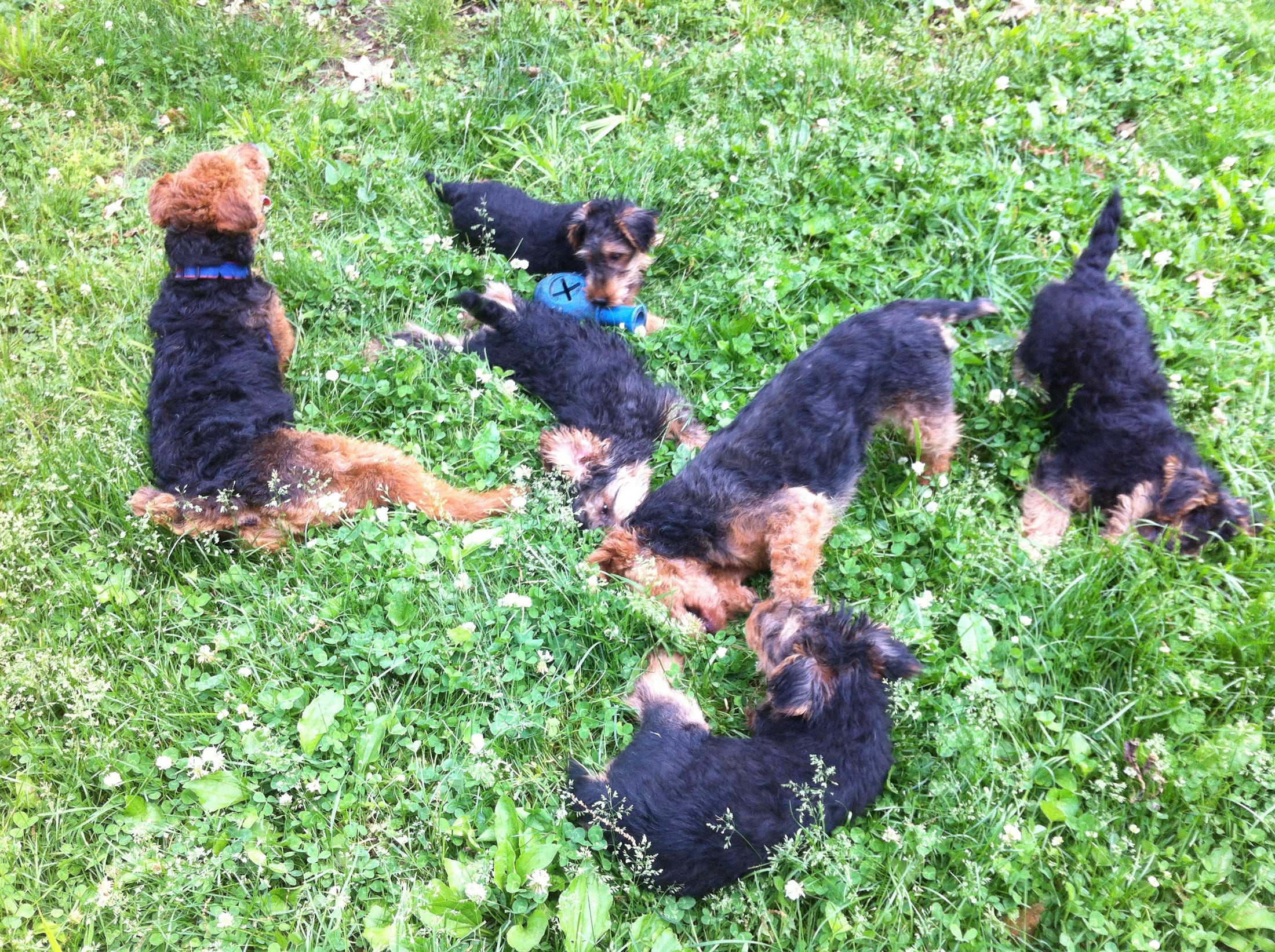The Breeder’s Responsibility
To prepare each puppy for transition to new home
Teach bite inhibition for people. They will learn from mother and littermates to use gentle bites with other dogs. It is the breeder’s responsibility to accomplish this before the pups are 7 weeks old and before they go to their new homes.
By bite inhibition, we mean that the puppy learns to use its teeth in moderation. When it comes to humans or their clothing, it rarely uses its teeth, and, when it does, it bites gently.
Each individual responds differently. Here are some strategies to consider for puppies 7 weeks and younger – begin before they have teeth:
- Consider the feelings of the puppy and be sure to hold it in a way that it is comfortable so that any mouthing is exploratory rather than evasive.
- For puppies under five weeks, give a high-pitched squeal when the puppy puts its mouth on human skin. Stop as soon as the puppy removes its mouth.
- This strategy may work to interrupt the bite of some slightly older pups, too. They will frequently look at you in surprise at which point they may be reinforced by gentle stroking and praise or by setting them down if that is what they seem to want.
- With pups 4 to 6 weeks old, it may be more effective to let them bite without responding in any way, then, when they let go, respond with something they like.
- If puppies continue to bite, put them down for a chance to pee or poop or nap in their pen.
- Some puppies are more likely to grab clothing at ankle level. Keep the puppies confined when you are not ready to train. [Link to Do you have to be a dog trainer? – under The Training Process “Training Ideas”] Tie a toy to a rope and drag it around as an acceptable item for the puppies to chase and grab. Building a habit of biting something other than clothing is a great advantage. (As far as shoes go, prevent issues by wearing no shoelaces – Crocs™ are excellent armor for the feet.)
- Puppies under 7 weeks old need to sleep as much as 18 hours a day. They may be awake for an hour or so at a time and then they will need another nap. If they have been playing well and begin to get mouthy it usually means it is time for a nap.
- Be sure that the puppies never get what they want – especially attention – by biting. If biting works, they will do it repeatedly.
Feed the puppies by hand sometimes so that they become familiar with receiving individual reinforcement.
Teach pups to sit for attention so they learn how to ask politely for what they need.
Puppies should sleep in alone in a crate for at least three nights before going to their new homes. The breeder should get up with them at night and take them to a potty area as needed. Prepare the pup for what its first night in the new home will be like.
Teach the pup to enter its crate when the door opens.
Here are steps to take to teach this behavior. Move a quickly as possible from one step to the next. When done smoothly, each step would be done only three to five times and the final behavior could be achieved in a matter of ten minutes. After that it will need consistent practice
- Keep the crate door closed until it is time for the pup to go in.
- Put a treat in the crate with the door closed and the pup on the outside. When the pup asks to go in, open the door, click as the pup goes in and let it get the treat.
- Call the pup back out and set up again with a new treat in the crate and the door closed. Repeat.
- Repeat and close the door when the pup is inside, give a second treat through the door, open the door and call the pup out.
- Open the door without a treat in the crate, click when the pup goes in, close the door and give a treat through the door. Open the door and call the pup out.
- Repeat, giving three to five treats through the door while the door stays closed longer. Open the door and call the pup out. If the pup is hesitant to come out, wait patiently, then click and treat for coming back out.
- Repeat, this time counting to seconds before giving the first treat through the bars. Give a second treat within a few seconds to reinforce quiet. If barking or whining begins at any time, move away from the crate – even out of site – keeping your thumb on the clicker in order to click and return to treat for the first full second of quiet.
- Repeat clicking for short periods of quiet and extending the time for longer periods as long as the pup can stay quiet.
- Continue to call the pup out and close the door between each trial so that the opening of the door serves to attract the pup to go in.
- Select a safe chew toy that is of great interest to the pup and give it to the pup only in the crate. Now, when the crate door opens and the pup goes in, put the toy in with the pup, close the door and give a treat. The toy will make it easier for the pup to stay quiet for longer. Continue to return to the quiet pup and give a treat from time to time. A click is no longer necessary.
- With regular practice, multiple times a day, going into the crate will become routine and staying quiet in the crate will become the norm.
Reinforce eliminating outside or in a location similar to what will be in the new home.
Find out what the expectations will be at the new home.
Will the puppy need to be familiar with grass, gravel, cement, pee pads, litter box? Get the puppy familiar with the desired substrate.
Will the puppy need to eliminate while on leash? Get the puppy familiar with the leash.
Use clicker training to establish new associations, just as with any dog.



